 | |
 | |
 | |
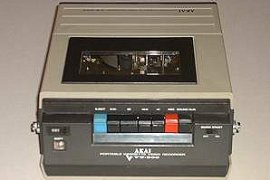 | |
 | ||||||
| ||||||
 |  | |||||
 | FORMAT: VK | |||||
DATE: 1977 PRICE: £? [2005: £?] 29x25x12cm 6.2 kg | ||||||
 |  |
|
| ||||||||||||||||||||||||||||||
| In the 1970's, Akai had a successful range of Reel to Reel VTRs and portapaks, the VT series. In 1977 they developed this cassette portable, the VT-300. | |
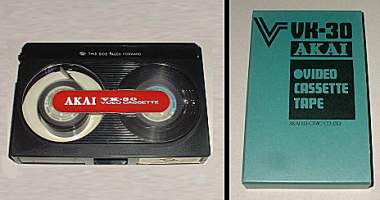 | The format is usually known as VK, after the VK-30 cassettes. These were about the same size as a betamax cassette, and used similar 1/2 inch tape -- with the spools rotating in opposite directions for some reason. A neat finger hole at the back of the tape makes them easy to remove from their sleeves and from the machine. |
| But despite the apparent similarity with beta, VK was very different: the maximum recording time was 30 minutes, and - amazingly for 1977 - the system was black and white, not colour! | |
| The machine itself is rather taller than the equivalent VHS or Beta machine, but surprisingly light. All the usual controls are present, including an audio dub key (labelled "sound dub"), a mechanical counter, and a battery level meter. A switch on the front selects "Quick Start" -- the system remains powered up and the tape laced between recordings, to give cleaner transitions between recordings, particularly when the machine was being used with a camera. | 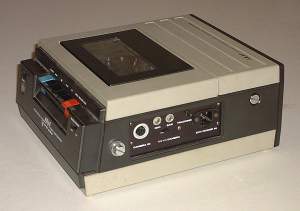 |
| Surprisingly there's an easy-to-remove cover at the back which gives easy access to the head drum -- the typical portapak user would have been fairly technical, and prepared to do their own maintenance -- including head cleaning. Not something the manufacturers encourage with today's VHS machines! | |
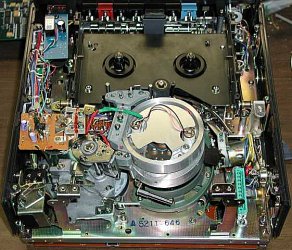 | The lacing system is quite unusual -- the pinch roller is mounted on a rotating platform under the head drum, along with pins which pull the tape out and around the drum. As it rotates, guide pins which normally lie horizontal rotate into a vertical position, and the pinch roller engages with a short rail which takes guides it into position against the capstan. The guts of the VT-300. The green lacing system can be seen below the drum; the silver pin at the bottom gradually rises as it rotates, like a drawbridge opening. |
| A miniature monitor was also available, which docked rather neatly on the side of the deck, to form a very handy total system. Akai later developed an improved VT-350 and a colour VT-400. | 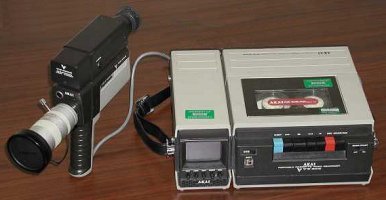 |
| The VK system was not a great success -- by the early eighties it was already being described as "long obsolete". The combination of a maximum 30-minute recording time, and monochrome recording did not look tempting compared to the VHS and Beta systems which were already out, and professional or industrial user would probably be using U-Matic. The VT series represents the end of the reel-to-reel era -- an evolutionary dead-end, but an interesting one. |
| This machine was very generously donated to the museum by Wolfgang Wegner. Many thanks! |